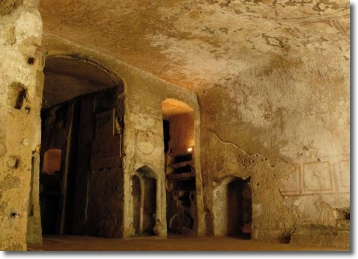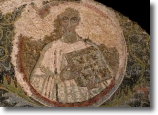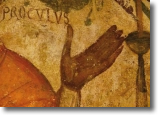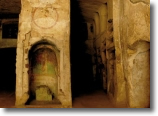
Around the origin of our Catacombs much has been discussed, they were simple burial and never were quarries or underground ways; the first note of the monument is repeated since the death of St. Agrippino our bishop in the II century, when his body was buried there in a noble tomb. Many miracles the saint operated by the tomb, so it became a place of reverence and neapolitan wished to be buried in that place.
This desire grew on the principle of the IV century, when the bishop Saint Zosimo moved from the Agro Marciano, near Agnano, the body of the martyr St. Gennaro, who was buried there as well...
The two graves became places of supreme reverence, so with the growth of the number of faithful was necessary to expand the graveyard more and more until the entire flap of the Capodimonte hill called "Colli Aminei".
In the VIII century Sicone, Duke of Benevento, stole the relics of St. Gennaro and then Giovanni IV, the saint bishop of Naples, fearing that the relics of many saints remain unsafe outside the walls of the city, moved all in the "intramurani" (posed inside the walls) temples and, since then, the Catacombs succumbed to ruin and abandonment to this day...


